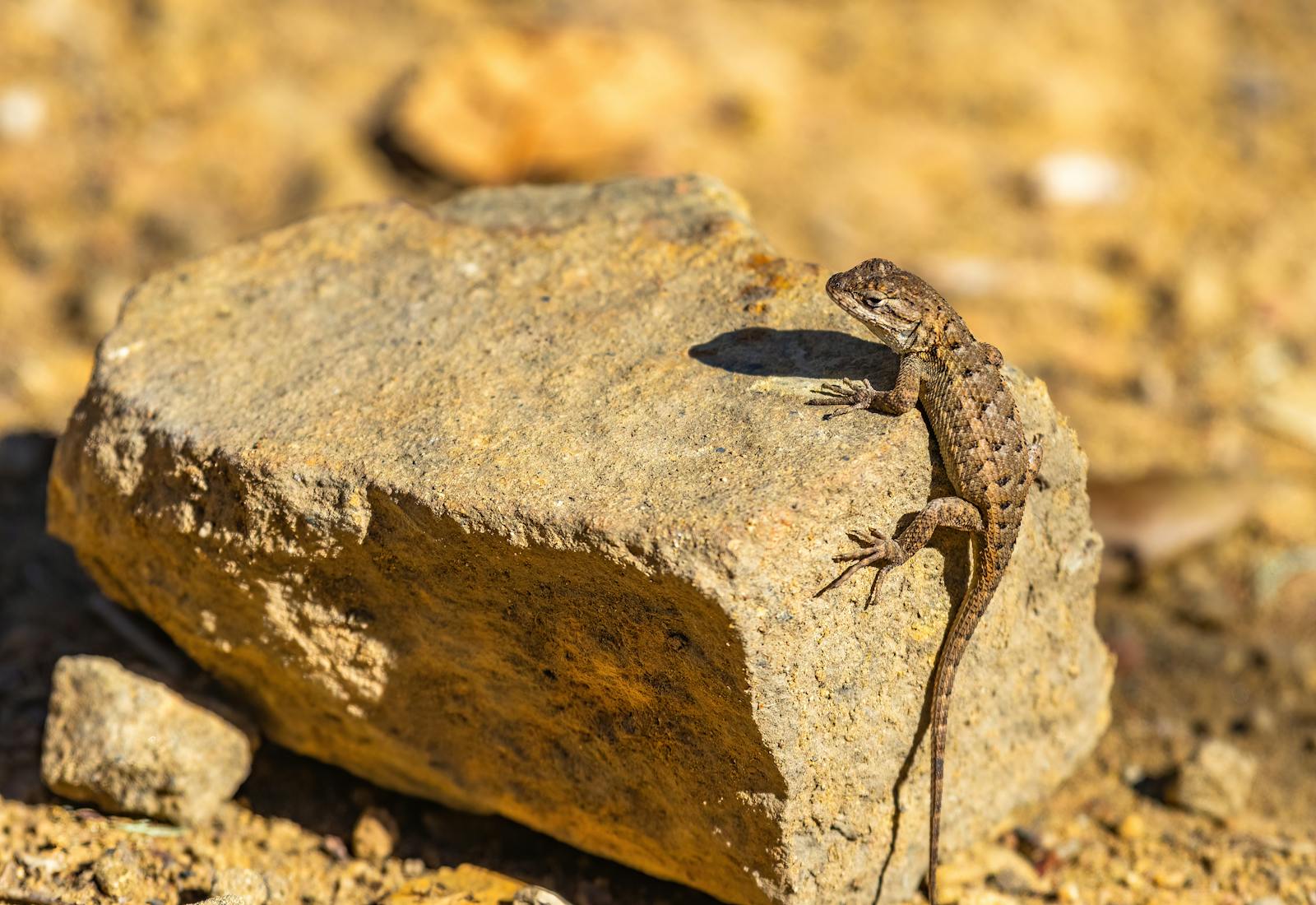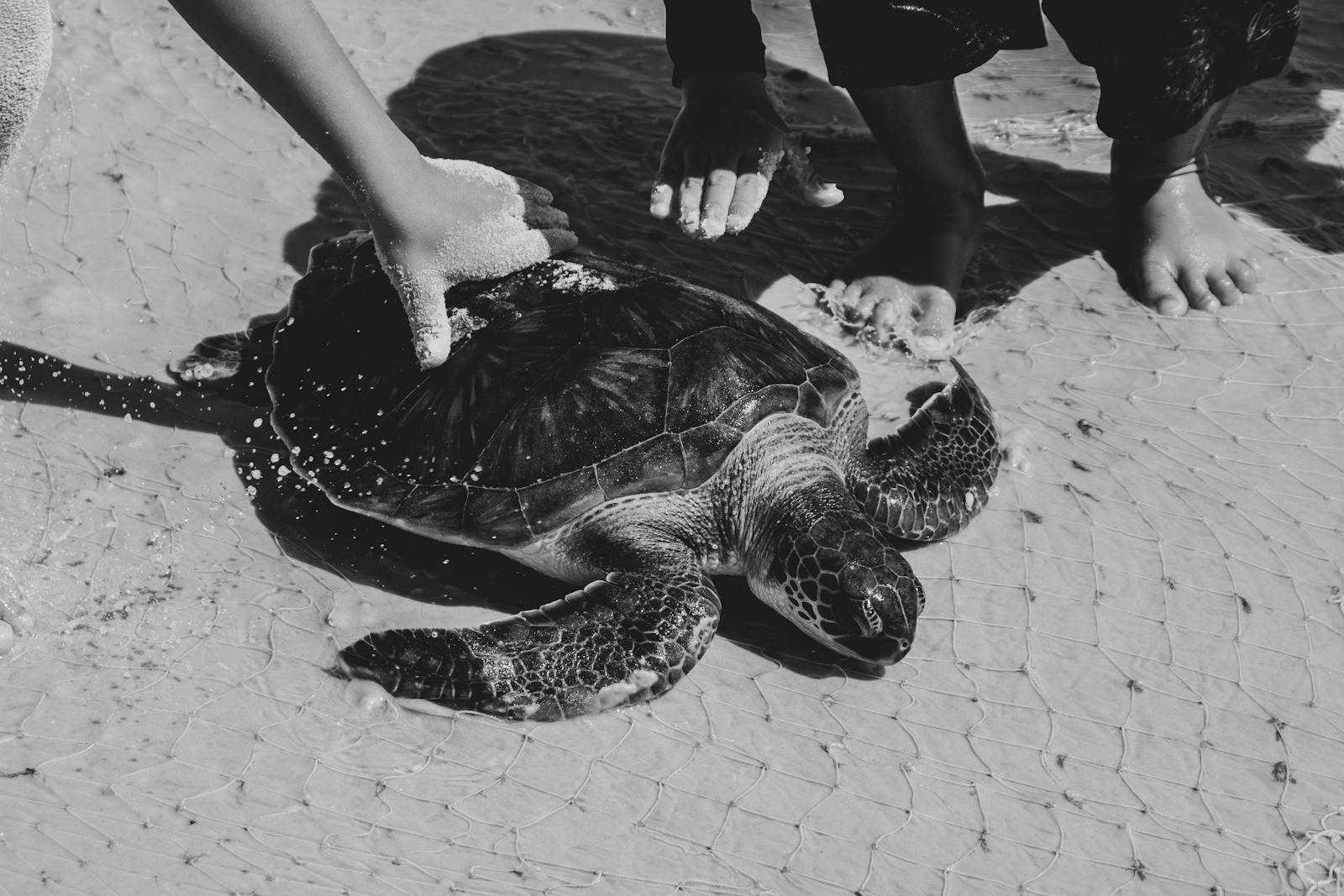Reptiles are among the most ancient vertebrates on our planet, having survived for over 300 million years through multiple mass extinction events. Today, however, many reptile species face unprecedented threats that have pushed them to the brink of extinction. From habitat destruction and climate change to illegal wildlife trade and invasive species, these cold-blooded creatures are disappearing at alarming rates. Despite their crucial ecological roles as both predators and prey in their ecosystems, reptiles often receive less conservation attention than mammals or birds. This article explores the world’s most critically endangered reptile species, examining their unique characteristics, the specific threats they face, and the conservation efforts underway to save them from extinction.
The Cuban Crocodile: An Island Endemic in Crisis
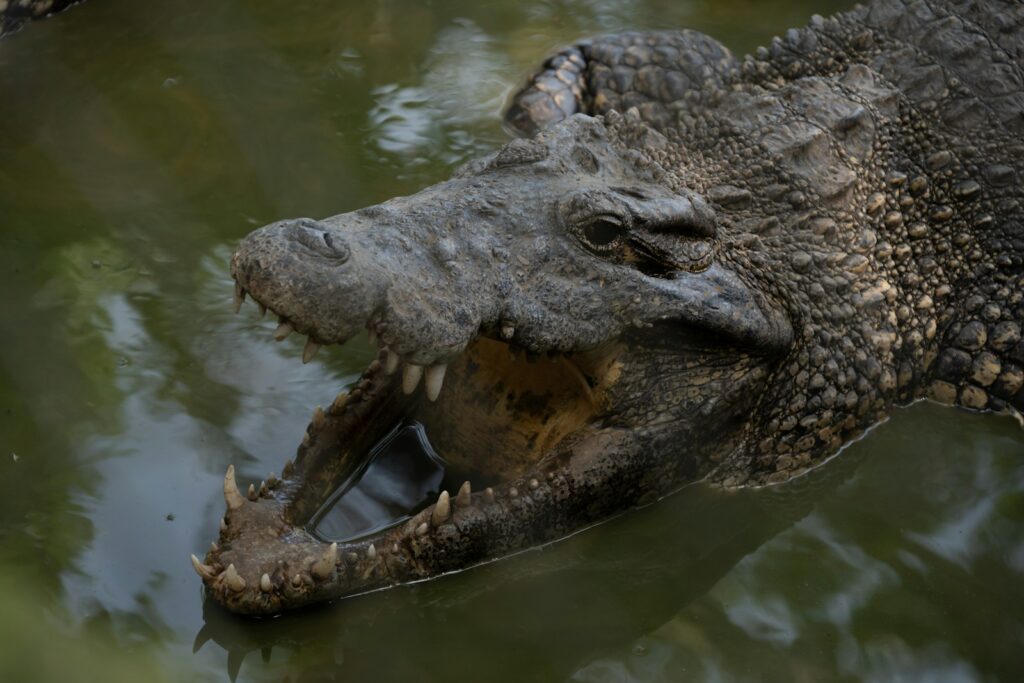
The Cuban crocodile (Crocodylus rhombifer) is among the world’s most endangered crocodilians, with fewer than 4,000 individuals remaining in the wild. Endemic to Cuba, these relatively small crocodiles are distinctive for their bright yellow coloration with black spots and blotches, as well as their unusually long legs that allow them to jump and run at surprising speeds. Their natural habitat has been reduced to just two areas: the Zapata Swamp and the Isle of Youth, representing a mere fraction of their historical range. The primary threats to their survival include habitat degradation, illegal hunting, and most significantly, hybridization with the American crocodile, which is diluting the pure Cuban crocodile gene pool at an alarming rate.
The Ploughshare Tortoise: Victim of the Exotic Pet Trade
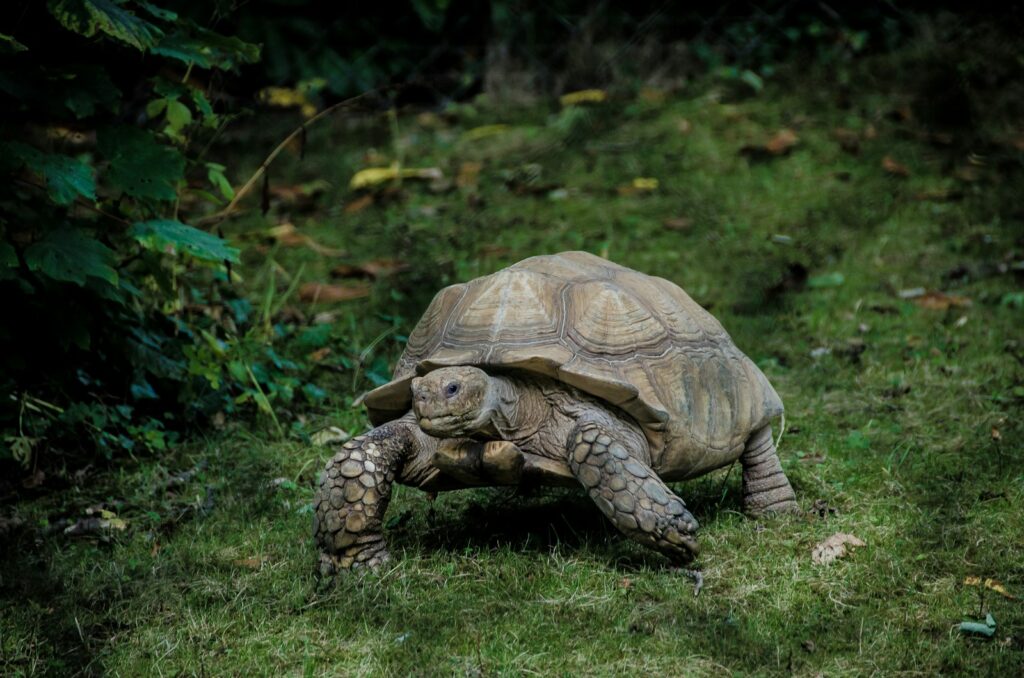
The ploughshare tortoise (Astrochelys yniphora) of Madagascar is considered by many conservation experts to be the most endangered tortoise on Earth, with fewer than 100 adult individuals believed to exist in the wild. This tortoise is instantly recognizable by its distinctive golden-domed shell and the unusual projection, similar to a ploughshare, that extends from the lower front of its plastron (bottom shell). Despite strict legal protection, the primary threat to the ploughshare tortoise is relentless poaching for the international exotic pet trade, where a single specimen can sell for tens of thousands of dollars on the black market. Conservation organizations have resorted to permanently engraving the shells of wild tortoises with identifying marks to make them less desirable to collectors, a desperate measure that reflects the severity of their situation.
The Philippine Crocodile: A Freshwater Giant on the Edge
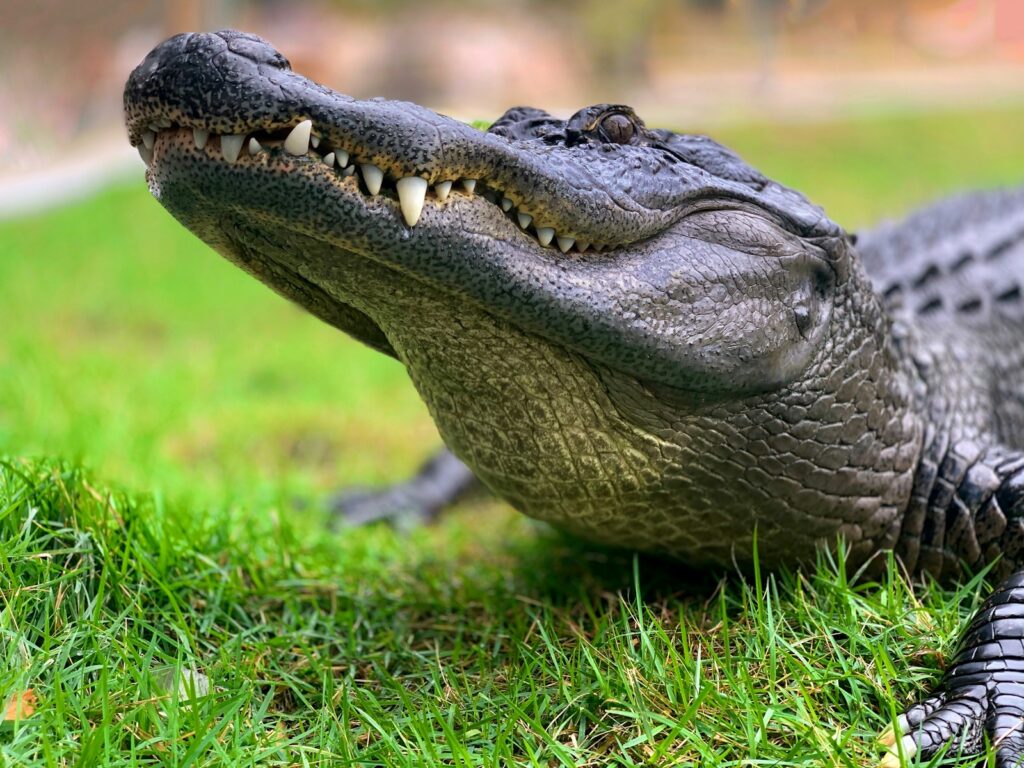
The Philippine crocodile (Crocodylus mindorensis) is a critically endangered freshwater crocodile endemic to the Philippines, with fewer than 200 mature individuals remaining in the wild. This relatively small crocodilian, typically growing to about 5 feet in length, has disappeared from 98% of its former range and now exists only in fragmented populations across a few islands. Unlike many crocodilians that are feared by local communities, the Philippine crocodile is actually a shy species that tends to avoid human contact. Their decline has been driven by habitat loss as wetlands are converted to agricultural land, accidental deaths in fishing gear, and deliberate killing due to fear and misunderstanding. Conservation efforts, including community education programs and captive breeding, have begun to show promising results in recent years, though the species remains perilously close to extinction.
The Jamaican Rock Iguana: Last of the Caribbean Giants
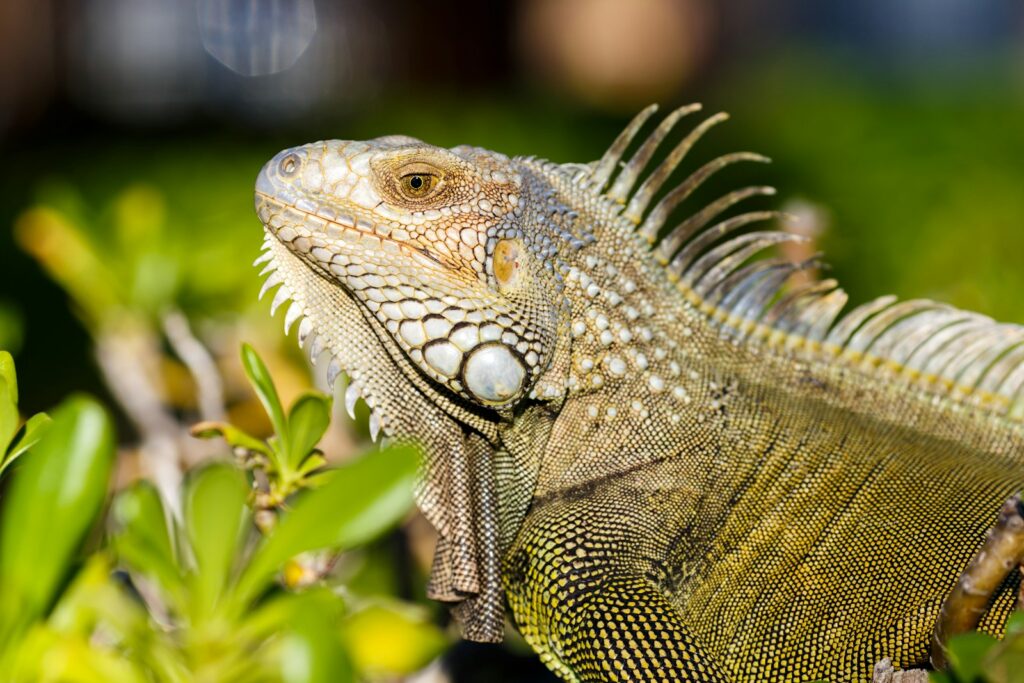
The Jamaican rock iguana (Cyclura collei), also known as the Jamaican iguana, represents one of conservation’s rare success stories, though it remains critically endangered with fewer than 300 individuals in the wild. Once thought to be extinct, this large lizard was rediscovered in 1990 in the Hellshire Hills of Jamaica, sparking intensive conservation efforts. These iguanas can grow to over 5 feet in length and are characterized by their dark grayish-green coloration and powerful build. The greatest threats to their survival include habitat destruction, predation by introduced mammals such as mongoose, cats, and dogs, and occasional hunting by humans. A collaborative conservation program involving captive breeding, headstarting (raising young iguanas in protected environments until they’re large enough to better avoid predators), and predator control has helped the population begin to recover, though their future remains precarious.
The Gharial: A River Giant with a Distinctive Snout
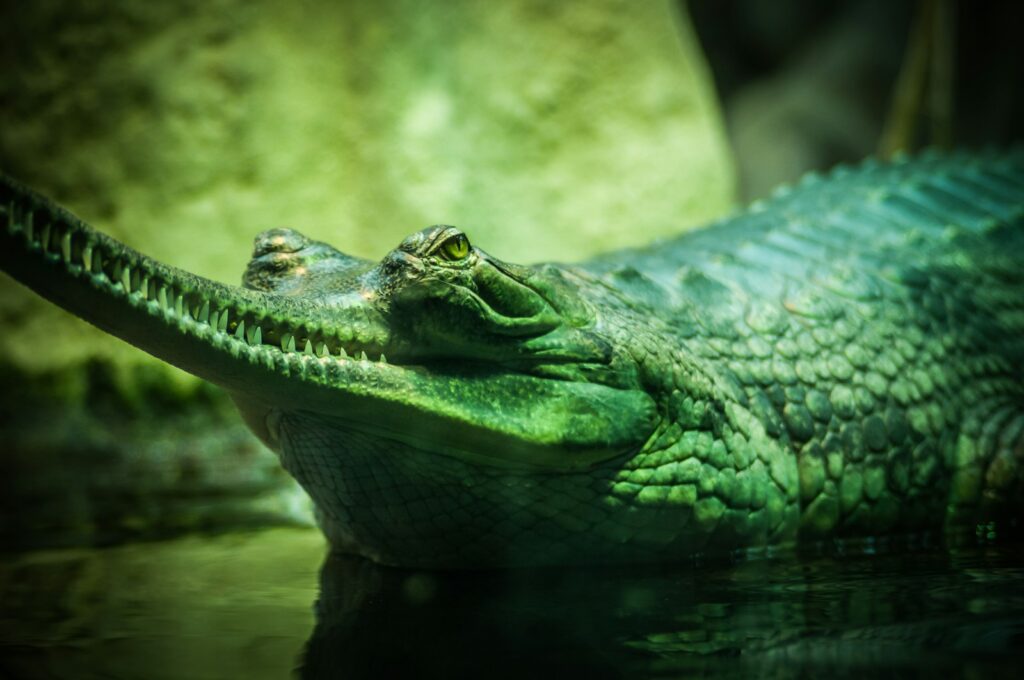
The gharial (Gavialis gangeticus) is one of the most distinctive and specialized crocodilians in the world, instantly recognizable by its extremely narrow snout and bulbous growth on the tip of the male’s snout called a “ghara.” Native to the northern Indian subcontinent, these fish-eating specialists have experienced a catastrophic 98% decline over three generations, with fewer than 1,000 adult gharials remaining in the wild, primarily in India and Nepal. Their decline has been driven by multiple factors, including dam construction that fragments their riverine habitat, depletion of fish stocks, entanglement in fishing nets, and pollution of waterways. Adult gharials can reach lengths of 20 feet, making them one of the longest crocodilians, yet despite their impressive size, they are among the least aggressive toward humans, as their specialized jaws are adapted exclusively for catching fish.
The Geometric Tortoise: A South African Jewel
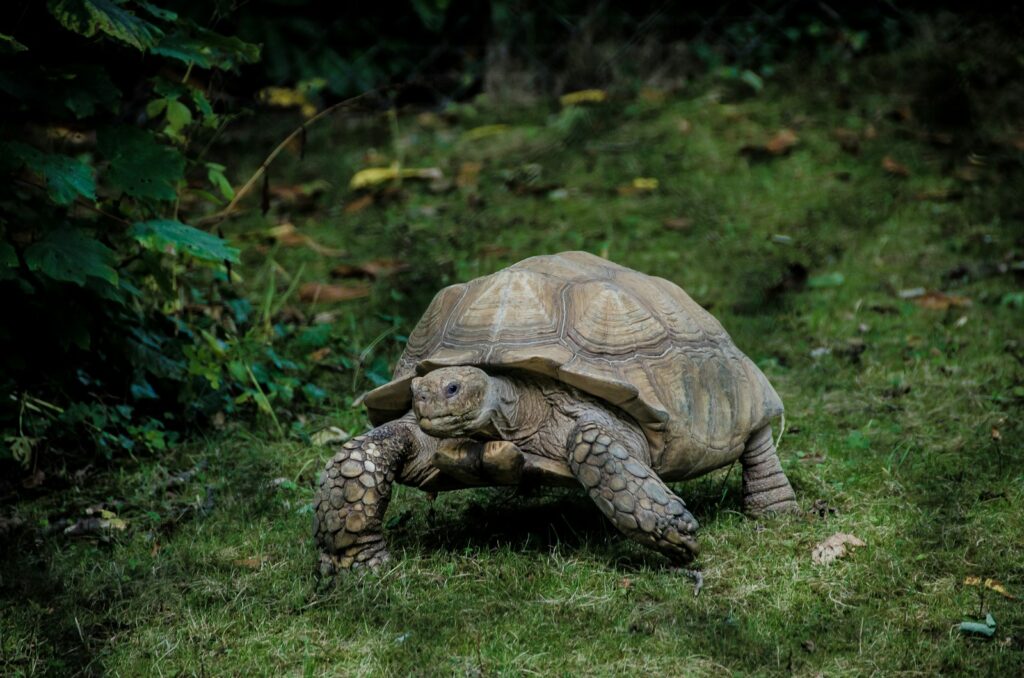
The geometric tortoise (Psammobates geometricus) is considered one of the world’s most endangered tortoises, restricted to just a few fragmented populations in South Africa’s Western Cape Province. These small tortoises, typically measuring less than 6 inches in length, are named for the striking geometric star patterns on their high-domed shells, featuring bright yellow lines on a dark background. The geometric tortoise has lost over 97% of its natural habitat to agricultural development, urban expansion, and invasive plants that alter the native fynbos vegetation they depend on. Wildfires, once a natural part of the ecosystem but now more frequent and intense due to climate change and human activities, have further decimated remaining populations. Conservation efforts focus on habitat protection and restoration, with several small protected areas established specifically for this species, though its future remains highly uncertain.
The Grand Cayman Blue Iguana: Back from the Brink
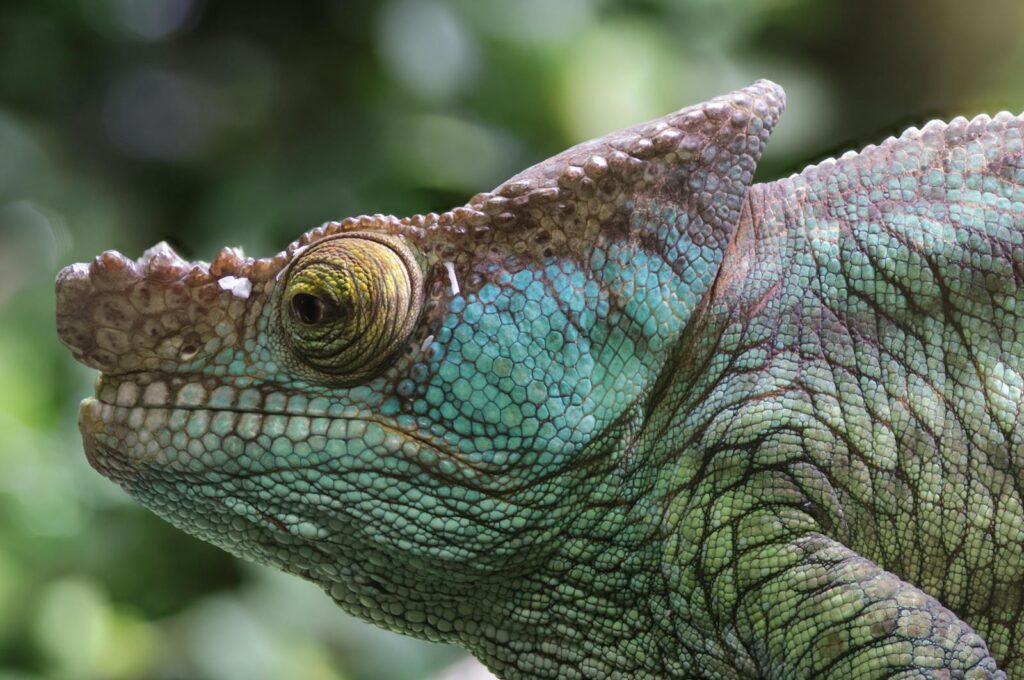
The Grand Cayman blue iguana (Cyclura lewisi) represents one of the most successful reptile conservation stories, though it remains endangered. In 2002, fewer than 25 of these magnificent iguanas remained in the wild, prompting intensive conservation action that has since brought the population to over 1,000 individuals. These large lizards can grow to over 5 feet in length and are named for their striking blue-gray coloration, which intensifies during breeding season when males turn a vivid turquoise blue. Endemic to Grand Cayman Island, these iguanas evolved without mammalian predators, making them particularly vulnerable to introduced cats, dogs, and rats. Habitat destruction for development has also played a major role in their decline, as the island has experienced rapid growth in tourism and financial services industries. The Blue Iguana Recovery Program, operated by the National Trust for the Cayman Islands, has established protected habitat and maintains a successful captive breeding program that continues to release iguanas into protected areas.
The Chinese Alligator: A Dragon in Decline
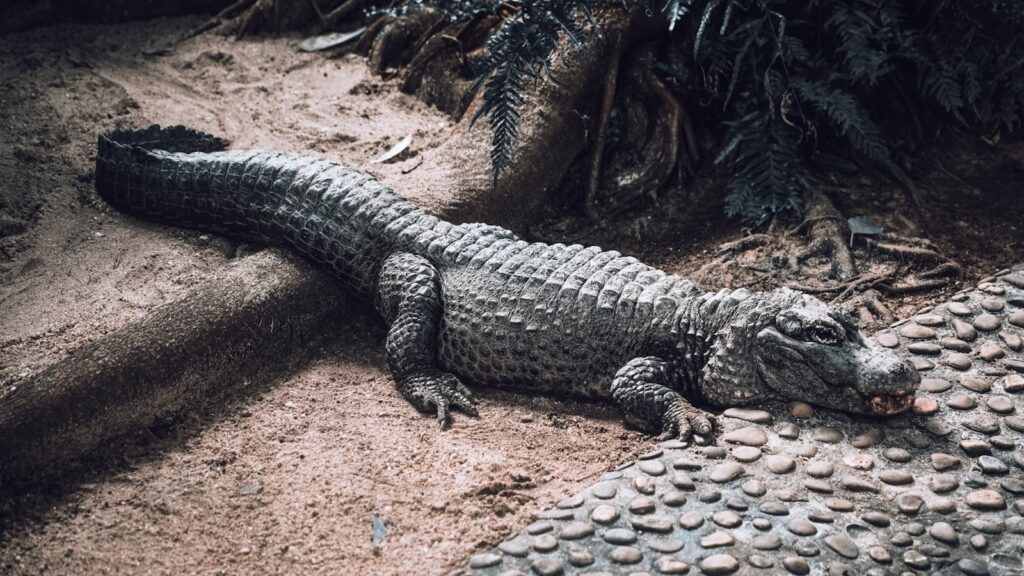
The Chinese alligator (Alligator sinensis), sometimes called the Yangtze alligator, is critically endangered with fewer than 150 individuals estimated to remain in the wild, making it one of the world’s most threatened crocodilians. This relatively small alligator, rarely exceeding 7 feet in length, is native to eastern China where it once inhabited the lower Yangtze River region. Unlike its American cousin, the Chinese alligator has evolved to survive cold winters by digging elaborate burrow systems where it hibernates during the coldest months. The species has been devastated by wetland reclamation for agriculture, which has destroyed approximately 95% of its habitat, along with pollution, dam construction, and direct killing due to fear and misconception. Fortunately, there are approximately 20,000 Chinese alligators in captivity worldwide, providing a genetic reservoir for reintroduction efforts, which have shown some success in recent years as China has established several protected areas for the species.
The Madagascar Big-headed Turtle: A Prehistoric Relic
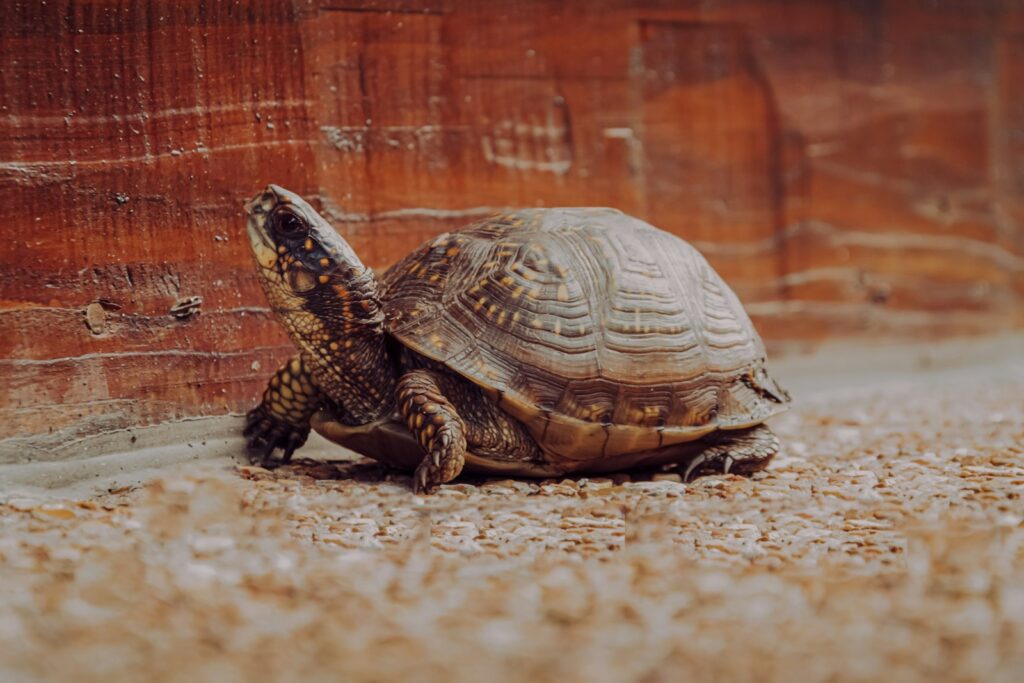
The Madagascar big-headed turtle (Erymnochelys madagascariensis), also known as the Rere or Madagascar side-necked turtle, is critically endangered with population declines exceeding 80% over three generations. This freshwater turtle is the only surviving member of its genus and represents a unique evolutionary lineage most closely related to turtles in South America, reflecting ancient continental connections from when Madagascar was part of the supercontinent Gondwana. As their name suggests, these turtles have disproportionately large heads that cannot be fully retracted into their shells, and they grow to about 20 inches in length. Their decline is primarily due to unsustainable harvesting for food, habitat degradation, and incidental capture in fishing gear. The species is particularly vulnerable because females take approximately 15 years to reach sexual maturity and nesting sites are highly predictable, making them easy targets for collectors who prize both the adults and their eggs as food.
The Anegada Rock Iguana: Island Isolation
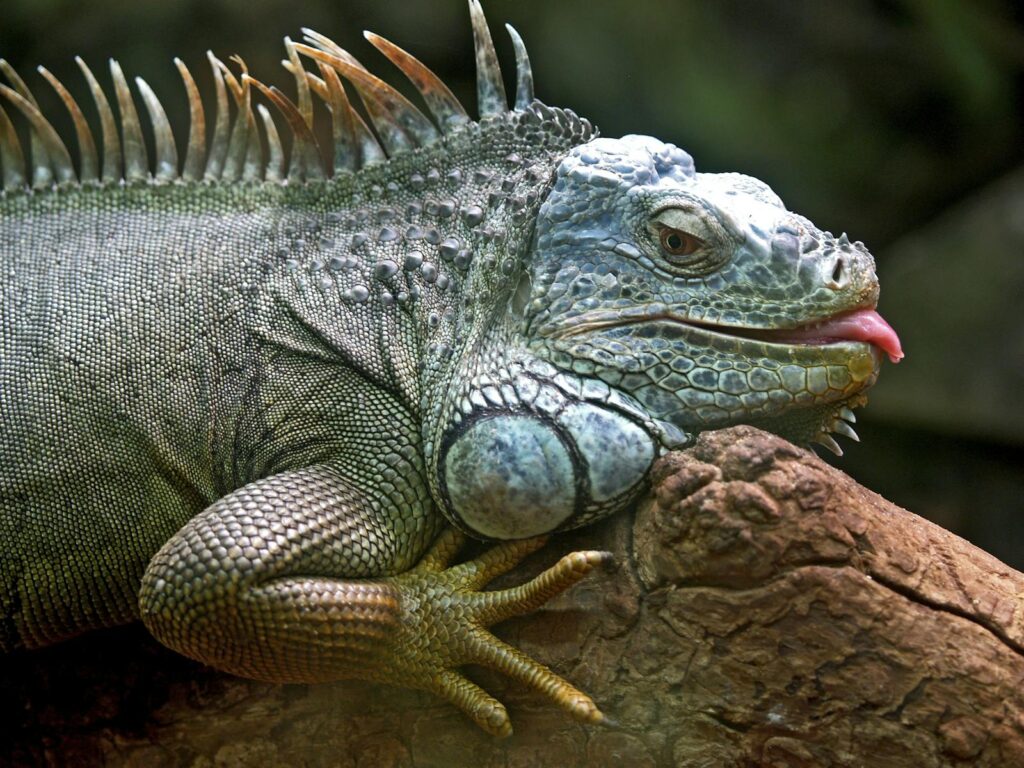
The Anegada rock iguana (Cyclura pinguis) is critically endangered, with an estimated wild population of fewer than 300 mature individuals restricted to the island of Anegada in the British Virgin Islands. These large lizards can grow to over 4 feet in length and are characterized by their grayish to brown coloration with subtle bluish tinting. Historically, they were found across several islands in the Puerto Rico Bank, but today survive naturally only on Anegada, a flat coral island with limited development. The primary threats to their survival include habitat degradation from development and agriculture, but most significantly, predation by introduced mammals such as cats and dogs that prey on juveniles, and competition with non-native livestock for food plants. A successful conservation program has established populations on several small, predator-free islands as a safety net against extinction, while habitat protection and predator control are being implemented on Anegada itself.
The Mary River Turtle: The Punk Rocker of the Reptile World.
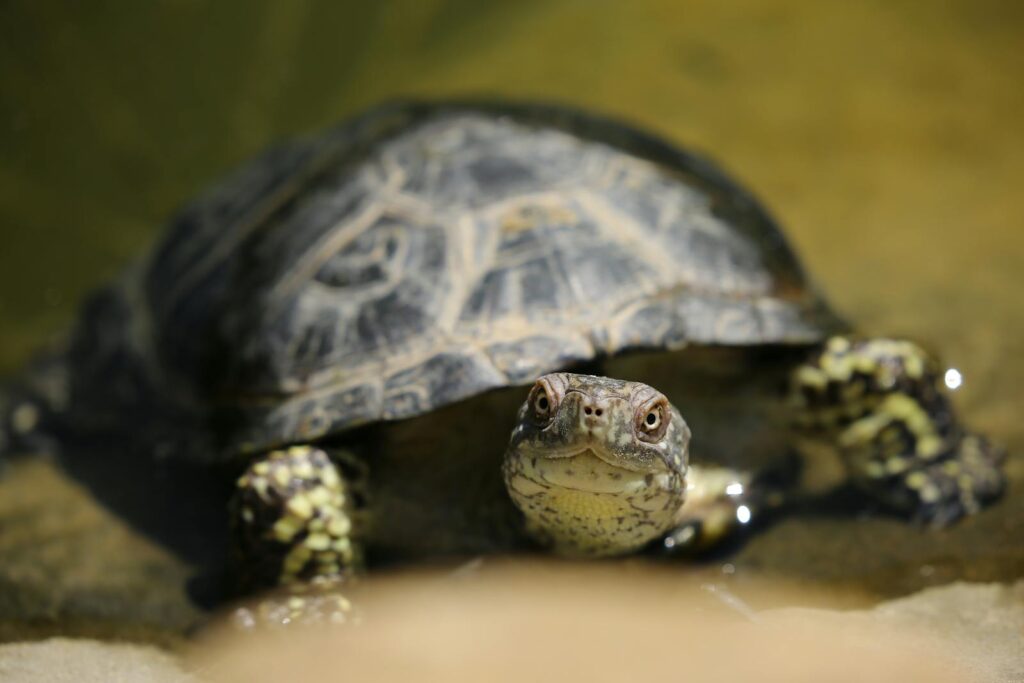
The Mary River turtle (Elusor macrurus) of Australia gained international attention when photographs of specimens with algae growing on their heads went viral, earning them the nickname “punk rock turtle.” This critically endangered freshwater turtle is endemic to the Mary River in Queensland and is among the most evolutionarily distinct turtle species, representing a lineage that diverged from all other living turtle species approximately 40 million years ago. One of their most remarkable features is their ability to breathe through specialized gill-like structures in their cloaca (vent), allowing them to stay underwater for days at a time. The Mary River turtle was only formally described by science in 1994, though it was well-known to the pet trade for decades prior, during which time thousands were collected and sold as “penny turtles,” severely depleting wild populations. Today, their primary threats include the construction of dams that alter their riverine habitat, predation of nests by introduced foxes and dogs, and the continued illegal collection of eggs.
The Burmese Starred Tortoise: Stars Fading Fast
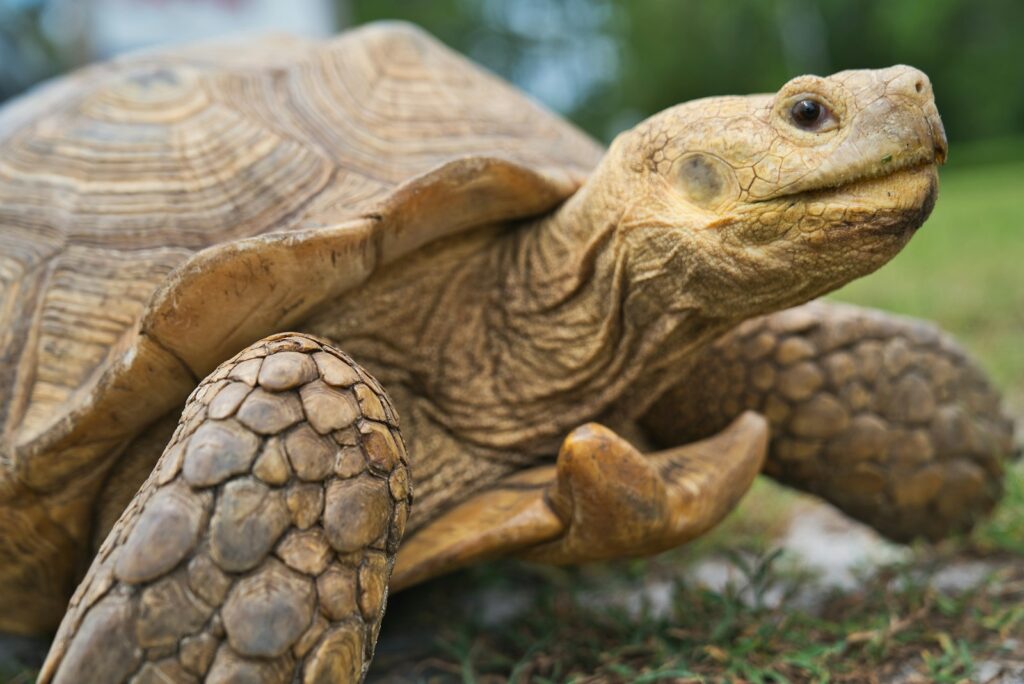
The Burmese starred tortoise (Geochelone platynota) is critically endangered, having experienced a population collapse of more than 90% since the 1990s due to rampant poaching for the international pet trade and traditional medicine. Endemic to Myanmar’s central dry zone, these medium-sized tortoises feature beautiful star-like patterns on their domed shells, making them highly desirable to collectors. By 2004, they were functionally extinct in the wild, with virtually no reproducing populations remaining outside captivity. Fortunately, a coordinated conservation breeding program established by the Turtle Survival Alliance and local partners has produced thousands of tortoises, with reintroduction efforts now underway in protected areas. The species faces additional challenges from habitat loss as forests are cleared for agriculture, and climate change that threatens to alter the seasonal patterns critical to their lifecycle. These tortoises play an important ecological role as seed dispersers, making their conservation vital for the health of Myanmar’s dry forest ecosystems.
The Conservation Challenges Facing Endangered Reptiles
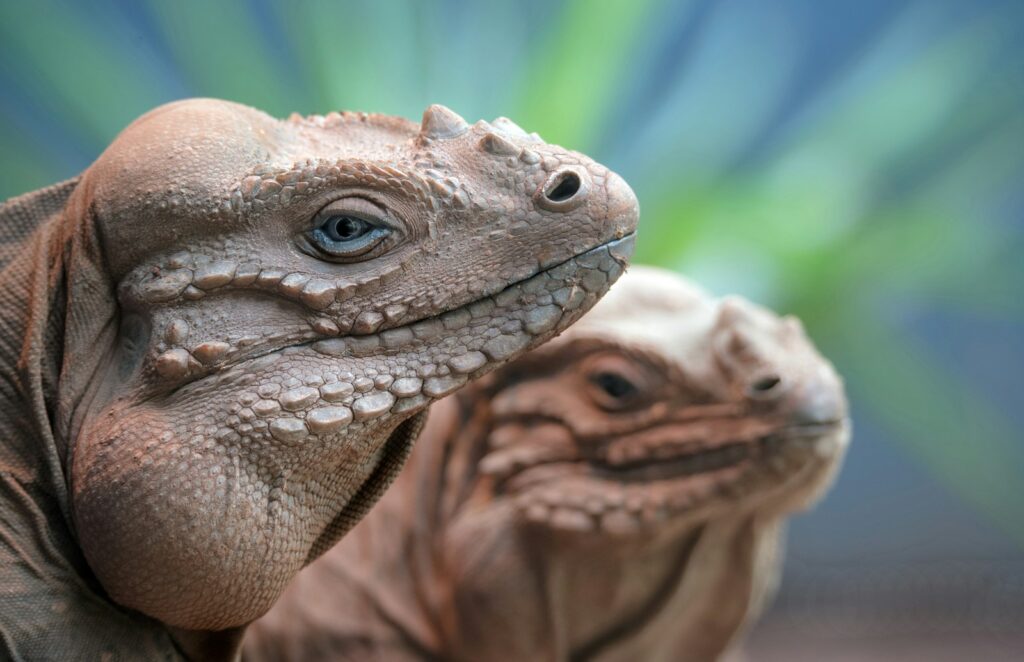
Reptile conservation faces unique challenges compared to more charismatic mammal and bird species. Public perception of reptiles is often negative or fearful, resulting in less funding and attention for their conservation needs despite their critical ecological roles. Additionally, many endangered reptiles have specialized habitat requirements and low reproductive rates, making their populations slow to recover even under ideal conservation conditions. Climate change poses a particular threat to many reptile species, as temperature determines the sex of offspring in many turtles and some lizards, potentially skewing sex ratios as global temperatures rise. Illegal wildlife trafficking remains a persistent threat, with rare reptiles fetching astronomical prices in underground markets, creating strong incentives for poaching despite legal protections. Conservation success stories like the Grand Cayman blue iguana demonstrate that dedicated programs combining habitat protection, captive breeding, and community engagement can bring species back from the brink, but such intensive efforts require sustained funding and political will that is often difficult to secure for reptiles.
Conclusion
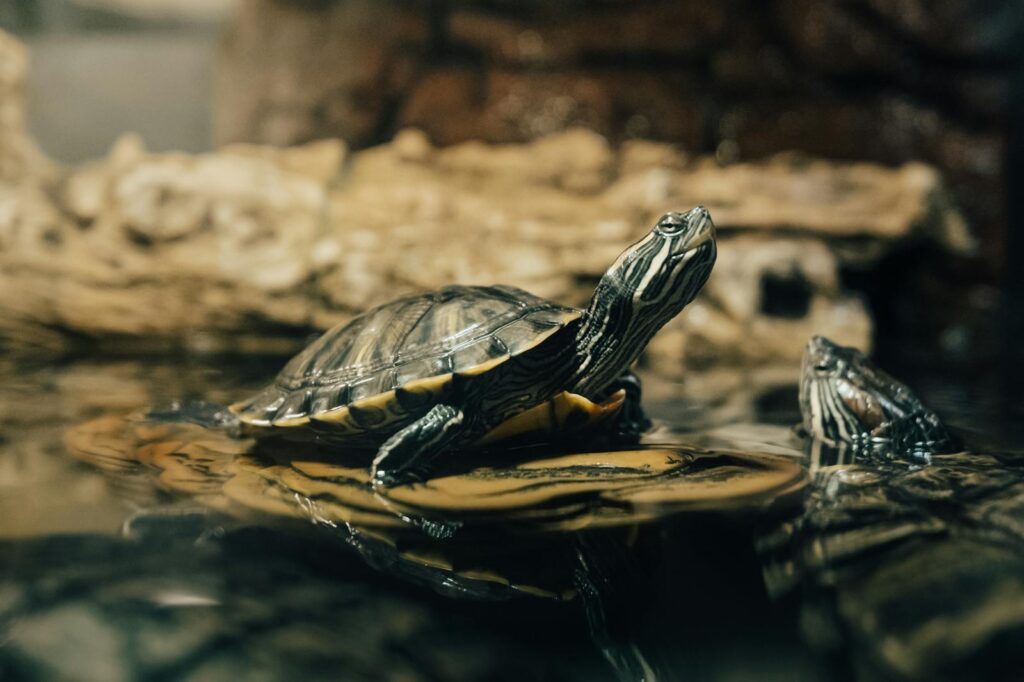
The plight of the world’s most endangered reptiles underscores the complex challenges facing biodiversity conservation in the 21st century. These ancient survivors, having weathered hundreds of millions of years of Earth’s history, now find themselves vulnerable to unprecedented human-driven threats. Despite these challenges, conservation success stories provide hope, demonstrating that with dedicated effort, even the most critically endangered reptiles can recover. The continued survival of these remarkable creatures depends on increased awareness, targeted conservation action, and a fundamental shift in how humans interact with the natural world. As we work to protect these endangered reptiles, we also preserve the complex ecological relationships they maintain and the genetic diversity they represent—irreplaceable elements of our planet’s natural heritage that, once lost, can never be recovered.



